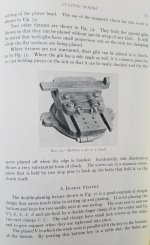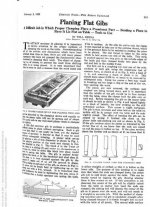I mentioned in another thread about my fixturing alloy jigs. Float the blank on the molten fixturing metal and use the sine calculations to find the angle. Works very well, gib is supported 100% the whole length, and boiling water removes the gib when done.
I'm soon to make a cross slide gib using one with a 18" long pocket, overall length is 19" and can be set up in two Kurt vises for milling. I'm using continuous cast ductile iron for the gib itself, which seems to have more consistency and finer grain structure than just sawing off a chunk of cast iron.
Here is one I made a new gib for another 1440 lathe in, note the two set screws so I can duplicate the taper without gage blocks in the vises using a dial indicator;
A new one for a 17" gib for my current project;
Same fixture with an old factory gib sitting in it, and a fixturing alloy ingot sitting by it;
But obviously I'm not doing it to earn a living, just forced by circumstances often over the years. And I'm not trying to teach or brag or somehow put anyone else down, it's just how I do it and there may be better ways.
If I had a big enough shaper or a planer I'd sure as heck favor that over doing the roughing in the mill, in any case the next step is scraping for a large contact area fit.
As to how they do it as machine tool manufacturers that would be interesting to know, I assume a dedicated jig with the angle built in. The reason behind the use of fixturing alloy for me was I couldn't find a better way to hold on to a lozenge section, the alloy does that very nicely.














